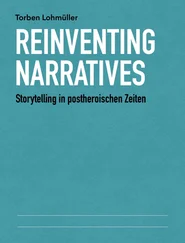This ideal is part of a reinvention of the school. It invites us to see diversity as a resource beneficial to the smooth running of schools (and, more generally, to the economic and social well-being of societies). It underpins learners’ academic and social commitment to the transformation of school systems or the way they function and, more particularly, to the forms of codification governing the pedagogical relationship between teachers, students and knowledge. It postulates the cognitive autonomy of every learner and, as such, rejects any indifference to difference: it places the causes of difficulties at school, and more generally social difficulties, in the shortcomings of school systems before inferring them from the characteristics of individuals, and reverses the normative frames of reference underlying school functioning. It places the control of educational and social inequalities linked to organizational effects at the heart of the legitimacy of school systems and makes them accountable for their ability to prevent and combat discrimination.
I.1. The school, a vector of social protection because of its accessibility
The first part of this book links the reinvention of the school to the shifts (economic, political, educational and social) that have contributed to establishing accessibility as an imperative. Such a mobilization is consistent with the redefinition of the economy of obligations uniting society and its members around a contextualized application of rights. As shown in Chapter 1, this new economy of obligations relates educational and social inequalities to the inaccessibility of organizations before likening them to the social consequences of a disease, disability or disorder. It makes accessibility a form of social protection centered on the exercise of individual rights and the possibilities given to individuals to assume the responsibilities that go with them. Accessibility is intended to give concrete expression to a “real” equality likely to prevent any form of exclusion by giving people the resources (cognitive, social, educational, etc.) required to protect themselves against the vicissitudes of life, such as unemployment, illness or poverty, through their involvement in economic and social well-being (Génard 1999). The equity ambition of inclusive schooling is, as the Organisation for Economic Co-operation and Development (OECD) states, to enable every student to achieve a minimum skills base and level of knowledge (OECD 2012). It is with the personalization of educational practices that it will be possible to build an optimal learning environment capable of supporting and developing the potential of every pupil through the construction of an appropriate school environment.
This redefinition of the economy of obligations is consubstantial with a socio-anthropological capability-based horizon correlating school performance with learning contexts (Crahay and Dutrévis 2010; Dehaene 2018). As Plaisance shows in Chapter 7of this book, this capability-based horizon challenges the traditional deficit approach based on levels of educability; in contrast to the distinction between the educable, semi-educable and non-educable, it substitutes the typical learner for the atypical one, who needs pedagogical and social support in order to have the resources required for his or her academic commitment and success. This shift in perspective has contributed to the dissolving of deficiency and ineducability. As Evans ( Chapter 2) shows, it contrasts the health needs resulting from impairment or illness with the complexity of the educational needs that can be met by differentiating pedagogical practices, making adjustments or mobilizing appropriate support. As a result, the idea that any learner could be enrolled in school, including those who had hitherto been educated in specialized environments, was accepted, provided that the school environment was adapted. This has led most OECD countries to give priority to mainstream schooling over special schooling (European Agency for Special Needs and Inclusive Education 2018). This shift in perspective has also led to the “universalization” of the need to make school and social environments accessible to all learners at risk of failure at school. It has turned the social background of pupils, the existence of learning difficulties, high potential, or an impairment or insufficient mastery of the language of the country of residence into potential sources of educational need that require the mobilization of resources specifically dedicated to taking them into account and, correlatively, to the accessibilization of educational environments (OECD 2007). Students with special educational needs (SEN), far from being limited to those with health problems, include, in most OECD countries, all those who need support to succeed at school because of their physical, behavioral, intellectual, emotional and/or social characteristics (UNESCO 1997).
This redefinition of the economy of obligations reorganizes the social contract around the social responsibility assumed by schools and their commitment to controlling educational and social inequalities linked to organizational effects (Ebersold 2010). This empowerment of schools takes the form of a universal approach to accessibility when the modes of accessibilization are organized around a pedagogy of invention that mobilizes varied teaching strategies and adapts the support or production processes to the rhythms and cognitive levels of learners without modifying the level of difficulty of the tasks to be carried out or the criteria for evaluating the target skills. This universal approach to accessibility is based on diagnostic assessments providing teachers with the pedagogical reference points necessary to take into account the diversity of profiles when organizing learning, that is, the choice of progression, the internal organization of the class, and the documents and exercises proposed. It is also supported by a range of training courses encouraging teachers to focus on the barriers to learning or co-teaching practices that, as Mainardi shows ( Chapter 4), invite teachers to mobilize strategies to help struggling students throughout the school population. This social responsibility can also be organized, as noted in Chapter 1, around an integrated approach to accessibility that seeks to alleviate the difficulties that teachers may have to consider within the diversity of educational profiles in order to prevent and combat the disruption of the principle of equality caused by failure or dropping out of school. This approach to accessibility is based on identifying pupils at risk of failure or dropping out of school, particularly through diagnostic assessments carried out, for example, in primary school. It is intended to intensify the support arrangements offered to the students identified as such through specific measures targeting the development of the skills of learners, teachers and headteachers. A corrective approach to accessibility described in Chapter 1links the social responsibility of schools to forms of accommodation and support that seek to respond, on a case-by-case basis, to needs inferred from a challenge or a medically or psychologically disabling health disorder. In most OECD countries, it is based on an assessment of needs carried out by a multidisciplinary team involving stakeholders from inside and outside the school environment with the aim of formalizing an individual educational plan that explains the accommodations and supports to be implemented.
I.2. Accessibility: an imperative legitimized by a dedicated institutional framework
This reinvention of the school is, however, consubstantial with the advent of an institutional framework that embodies the imperative of accessibility and the principles and shifts in perspective claimed. As Frandji shows ( Chapter 8), this institutional framework takes the form of facilities whose objectives vary according to the prevailing epochs and rationalities. These facilities aim to democratize the school system when they ensure equal access to schooling. They take the form of initiatives and measures linking the accessibilization of school environments with schooling in mainstream environments of learners with a disability or disabling disorder, such as the creation of special classes, support and guidance facilities for learners; they also consist of priority education policies that have the aim of removing barriers to access to schooling by allocating additional resources that target disadvantaged students and areas and support educational differentiation.
Читать дальше










